Find Help
More Items From Ergsy search
-

Incontinence and Prolapse - Physiotherapy Advice
Relevance: 100%
-

Incontinence and Prolapse - Physiotherapy Advice
Relevance: 100%
-
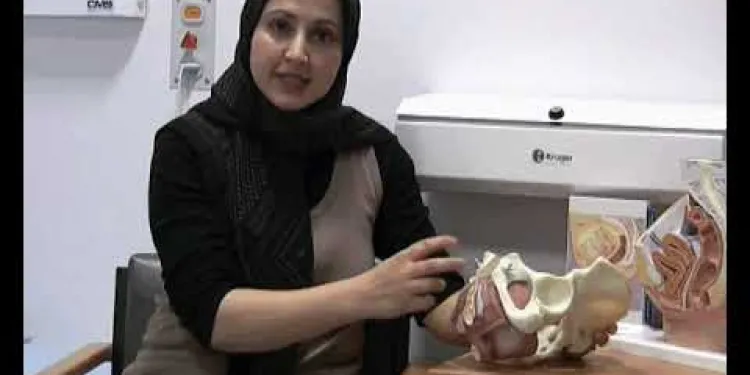
Physiotherapy Assessment of Urinary Incontinence
Relevance: 63%
-

Prolapse Management
Relevance: 54%
-

Prolapse Types and Tips
Relevance: 49%
-

Pelvic health: prolapse
Relevance: 48%
-

Pelvic health: prolapse
Relevance: 47%
-

Incontinence | NHS
Relevance: 40%
-

Pelvic health: Urge Incontinence
Relevance: 36%
-
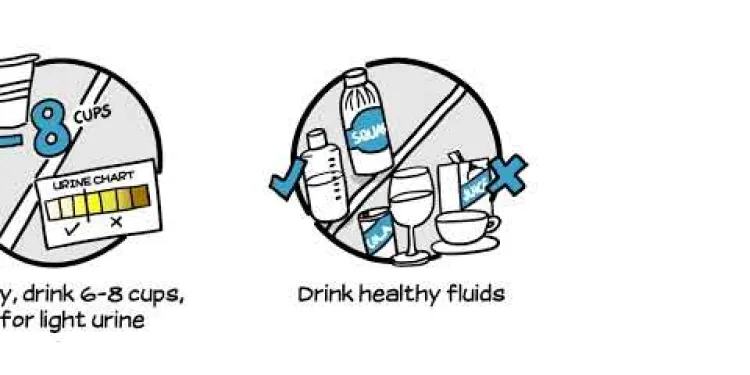
Avoiding infections with urinary incontinence
Relevance: 36%
-

Pelvic health: stress urinary incontinence
Relevance: 33%
-

Your pelvic health matters: insights from NHS clinicians
Relevance: 32%
-

Newcastle Specialist Continence Service's Light Urinary Incontinence Project
Relevance: 31%
-

What is air physiotherapy?
Relevance: 30%
-

Is a prescription needed for air physiotherapy?
Relevance: 30%
-

Sandwell and West Birmingham Hospitals NHS Trust – Faecal Incontinence and Constipation Healthcare
Relevance: 29%
-

Does air physiotherapy involve medication?
Relevance: 29%
-

How does air physiotherapy work?
Relevance: 29%
-

Are there any exercises involved in air physiotherapy?
Relevance: 28%
-

Can air physiotherapy be done at home?
Relevance: 28%
-

Who can benefit from air physiotherapy?
Relevance: 28%
-

NHSGGC - Respiratory Physiotherapy Service: Self-Management
Relevance: 28%
-

What equipment is used in air physiotherapy?
Relevance: 28%
-

Can air physiotherapy prevent respiratory infections?
Relevance: 27%
-
Can air physiotherapy help with COVID-19 recovery?
Relevance: 26%
-

How often should one perform air physiotherapy?
Relevance: 26%
-
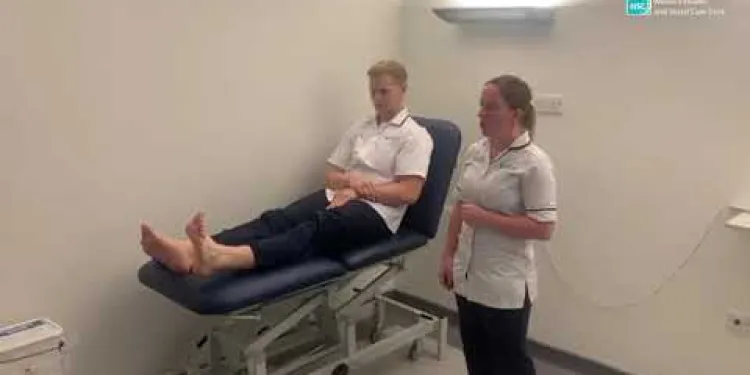
Physiotherapy Exercises following an Ankle Fracture
Relevance: 26%
-

What qualifications should a provider of air physiotherapy have?
Relevance: 26%
-
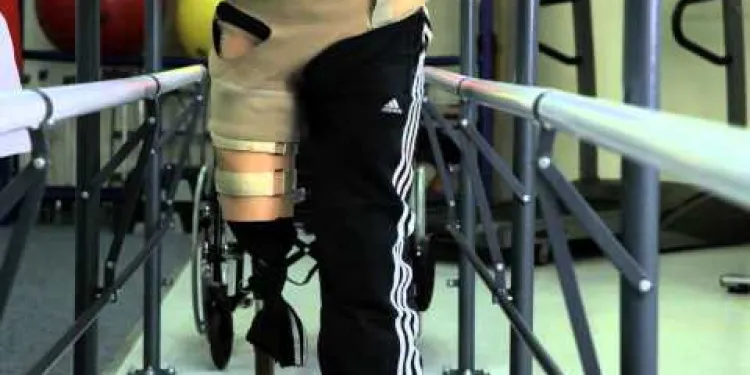
The Leeds Specialist Rehabilitation Centre - 3 Prosthetic Physiotherapy
Relevance: 25%
-

Part One: Understanding Osteoarthritis- MSK Physiotherapy
Relevance: 23%
-

What is an incentive spirometer in air physiotherapy?
Relevance: 20%
-

The Pelvic Floor Muscles - Developing an Exercise Programme
Relevance: 20%
-
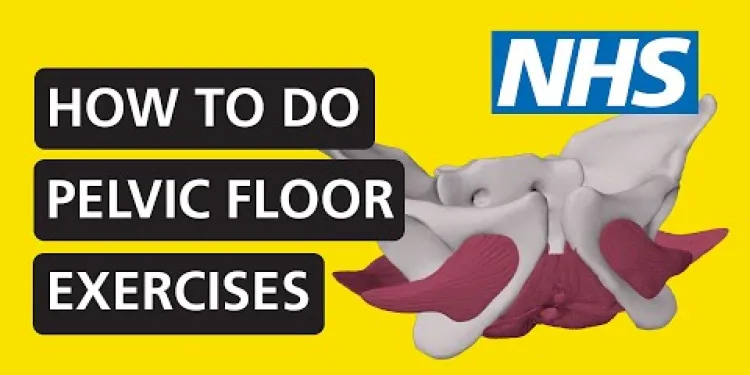
How to do pelvic floor exercises | NHS
Relevance: 18%
-

Is air physiotherapy different from traditional physiotherapy?
Relevance: 17%
-
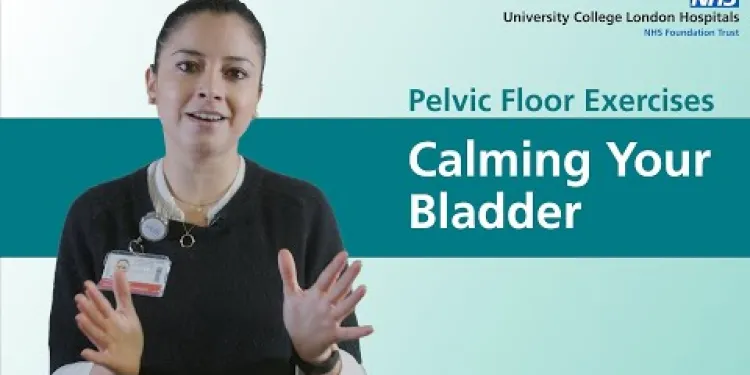
Pelvic Floor Exercises - Using Your Pelvic Floor to Calm Down Your Bladder
Relevance: 17%
-

How does PEP therapy work in air physiotherapy?
Relevance: 15%
-

Are there any risks associated with air physiotherapy?
Relevance: 13%
-

How long does an air physiotherapy session last?
Relevance: 11%
-
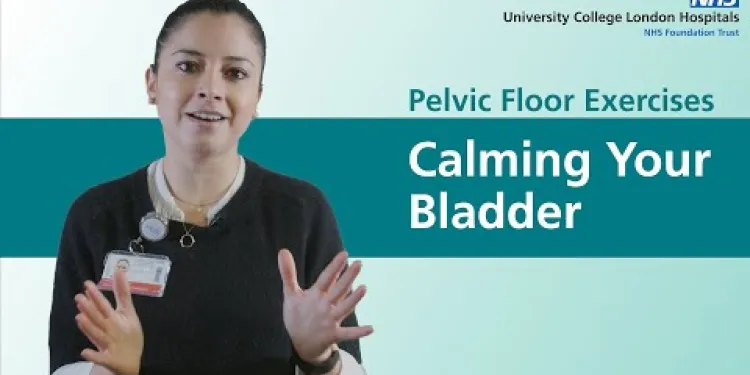
Pelvic Floor Exercises - Using Your Pelvic Floor to Calm Down Your Bladder
Relevance: 10%
-

Frozen Shoulder Assisted Abduction
Relevance: 10%
Incontinence and Prolapse - Physiotherapy Advice
Understanding Incontinence and Prolapse
Incontinence and prolapse are common conditions affecting many individuals in the United Kingdom, particularly women. Incontinence refers to the involuntary leakage of urine, which can result from various factors, including weak pelvic floor muscles, age, pregnancy, and childbirth. Prolapse, on the other hand, occurs when the pelvic organs, such as the bladder, uterus, or rectum, descend into or outside the vaginal canal due to weakened support structures. Both these conditions can significantly impact daily life and require appropriate management.
Importance of Physiotherapy
Physiotherapy plays a vital role in managing and treating incontinence and prolapse. Physiotherapists specifically trained in pelvic health can offer tailored exercises and strategies to strengthen the pelvic floor muscles, support the pelvic organs, and improve overall function. Engaging in physiotherapy can alleviate symptoms, prevent further deterioration, and enhance quality of life.
Pelvic Floor Exercises
One of the cornerstone treatments for incontinence and prolapse involves pelvic floor muscle training (PFMT). The primary exercise, commonly known as Kegels, involves tightening and lifting the muscles that support the pelvic organs. Practising these exercises consistently can improve muscle tone and endurance, thus reducing symptoms. A physiotherapist will guide you on how to perform these exercises correctly and progressively increase the difficulty based on your progress.
Bladder Training
Bladder training is another essential component of physiotherapy for those with incontinence. This approach involves gradually increasing the interval between voiding in order to train the bladder to hold more urine. By adhering to a structured schedule, individuals can regain control over their bladder function. Physiotherapists can provide tailored programs and monitor progress to ensure optimal results.
Lifestyle Modifications
Physiotherapists also emphasize the importance of lifestyle modifications to manage incontinence and prolapse. Maintaining a healthy weight is crucial, as excess weight can exacerbate pressure on the pelvic floor. Additionally, adopting a high-fiber diet aids in preventing constipation, which can strain pelvic muscles. Staying hydrated, avoiding bladder irritants like caffeine and alcohol, and incorporating regular physical activity will also contribute to better pelvic health.
Seeking Professional Help
If you are experiencing symptoms of incontinence or prolapse, it is essential to seek professional help. In the UK, pelvic health physiotherapists are accessible through the NHS and private practices. Early intervention can mitigate symptoms and prevent complications. Do not hesitate to discuss your condition with your healthcare provider and get a referral to a specialized physiotherapist if necessary.
In conclusion, incontinence and prolapse can be managed effectively with the right physiotherapy advice and interventions. Understanding the role of pelvic floor exercises, bladder training, lifestyle modifications, and seeking timely professional help are key steps toward regaining control over your pelvic health and improving your overall well-being.
Incontinence and Prolapse - Physiotherapy Advice
What Are Incontinence and Prolapse?
Incontinence and prolapse are health issues that many people in the UK have. This happens a lot with women. Incontinence means leaking urine when you don’t want to. This can happen if your pelvic floor muscles are weak, or because of age, pregnancy, or having a baby. Prolapse happens when organs like the bladder, womb, or back passage fall down and push into or out of the vagina. This is because the support structures are weak. Both problems can make life hard, so they need proper treatment.
Why is Physiotherapy Important?
Physiotherapy helps treat incontinence and prolapse. Special physiotherapists can teach you exercises to make your pelvic floor muscles stronger. These exercises help support your organs and make your body work better. Physiotherapy can reduce symptoms, stop problems from getting worse, and help you feel better.
Pelvic Floor Exercises
Pelvic floor exercises are very important for treating incontinence and prolapse. One key exercise is called Kegels. This exercise involves tightening and lifting the muscles that support your organs. Doing these exercises regularly can make your muscles stronger and help your symptoms improve. A physiotherapist will show you how to do them right and make them harder as you get better at them.
Bladder Training
Bladder training is also important for people with incontinence. It means slowly making the time between bathroom trips longer. This helps your bladder hold more urine. By following a set schedule, you can control your bladder better. A physiotherapist will make a plan for you and check how you are doing to ensure you get the best results.
Changes in Lifestyle
Physiotherapists also recommend lifestyle changes to help with incontinence and prolapse. Keeping a healthy weight is important because extra weight can put more pressure on your pelvic floor. Eating lots of fiber can prevent constipation, which can strain your pelvic muscles. Drinking enough water, avoiding drinks like coffee and alcohol that bother your bladder, and staying active will help keep your pelvic area healthy.
Getting Professional Help
If you have symptoms of incontinence or prolapse, it is important to get help from a professional. In the UK, you can find physiotherapists through the NHS and private clinics. Getting help early can reduce symptoms and stop problems from getting worse. Talk to your doctor about your condition and ask for a referral to a pelvic health physiotherapist if you need one.
In summary, you can manage incontinence and prolapse well with good physiotherapy guidance and actions. Knowing about pelvic floor exercises, bladder training, lifestyle changes, and getting help early are important steps to take back control of your pelvic health and live a happier life.
Frequently Asked Questions
What is incontinence?
Incontinence is the involuntary loss of urine or faeces. It is a common condition that can affect people of all ages, but is more prevalent among older adults and women who have had children.
What types of incontinence are there?
There are several types of incontinence, including stress incontinence, urge incontinence, overflow incontinence, and functional incontinence. Each type has different causes and requires different management approaches.
What is a pelvic organ prolapse?
Pelvic organ prolapse occurs when one or more of the pelvic organs, such as the bladder, uterus, or rectum, descend from their normal position due to weakened pelvic floor muscles.
How can a physiotherapist help with incontinence?
A physiotherapist can help by providing exercises to strengthen the pelvic floor muscles, offering bladder training techniques, and advising on lifestyle changes that can improve bladder control.
What are pelvic floor exercises?
Pelvic floor exercises, also known as Kegel exercises, involve repeatedly contracting and relaxing the muscles that form part of the pelvic floor. These exercises help to strengthen the muscles, improving bladder and bowel control.
How often should I do pelvic floor exercises?
It is typically recommended to perform pelvic floor exercises three times a day. Each session should consist of 10 contractions held for a few seconds each.
Can men also experience incontinence?
Yes, men can experience incontinence, although it is less common than in women. It can be caused by prostate problems, surgery, or other medical conditions.
What are the risk factors for pelvic organ prolapse?
Risk factors include childbirth, particularly vaginal delivery, aging, obesity, chronic cough, heavy lifting, and genetics.
Can lifestyle changes help manage incontinence?
Yes, lifestyle changes such as maintaining a healthy weight, reducing caffeine and alcohol intake, and stopping smoking can help manage incontinence symptoms.
What is bladder training?
Bladder training is a technique that involves scheduling bathroom visits at set intervals and slowly increasing the time between visits. This helps to increase bladder capacity and improve control.
When should I seek medical help for incontinence?
You should seek medical help if incontinence is affecting your quality of life, causing distress, or if you are experiencing other symptoms such as pain or blood in the urine.
Can physiotherapy help with pelvic organ prolapse?
Yes, physiotherapy can help manage symptoms of pelvic organ prolapse by strengthening the pelvic floor muscles, improving posture, and providing advice on activities that can reduce strain on the pelvic floor.
Are there any devices that can help with incontinence?
Yes, there are various devices such as pessaries, which support the pelvic organs, and continence pads or pants that can help manage incontinence. Consult a healthcare provider to find the best option for you.
What should I expect during a physiotherapy session for incontinence?
During a physiotherapy session, your therapist will assess your pelvic floor function, discuss your symptoms and bladder habits, and create a tailored exercise plan to strengthen your muscles and improve bladder control.
Is surgery an option for incontinence or prolapse?
Surgery can be an option for severe cases of incontinence or prolapse that do not respond to conservative treatments like physiotherapy. Your healthcare provider will discuss the best treatment options based on your condition.
What is incontinence?
Incontinence means you can't always control when you go for a wee or poo.
Sometimes wee or poo comes out when you don't want it to.
It's OK to talk to a doctor. They can help you with this.
Using pads or special underwear can help you feel more comfortable.
Incontinence means not being able to control when you pee or poop. This can happen to anyone, but it is more common in older people and women who have had babies.
What are the different kinds of incontinence?
Incontinence means having trouble holding pee or poop.
There are different kinds:
- Stress Incontinence: Pee might leak when you laugh, cough, or jump.
- Urge Incontinence: You suddenly need to pee right away and might not make it to the bathroom.
- Overflow Incontinence: Your bladder doesn't empty all the way, and some pee might leak.
- Functional Incontinence: You can't get to the bathroom in time because of a physical or mental reason.
- Mixed Incontinence: You might have more than one kind of the above problems.
To help, try:
- Going to the bathroom regularly, even if you don't feel like you need to.
- Wearing special pads or underwear that help keep you dry.
- Talking to a doctor or nurse for advice.
There are different types of problems when someone can't control their pee.
These problems are called:
- Stress incontinence
- Urge incontinence
- Overflow incontinence
- Functional incontinence
Each one happens for different reasons.
Each one needs different ways to help manage it.
Pictures, charts, or talking to a doctor can help understand these better.
What is a pelvic organ prolapse?
A pelvic organ prolapse is when organs inside the pelvis, like the bladder or womb, move from their usual place. This can happen when the muscles holding them get weak. It can feel uncomfortable, like a heavy feeling or a bulge.
If you think you have this, talk to a doctor or nurse. They can help and give you advice. You can also use pictures or a model to understand better.
Pelvic organ prolapse happens when one or more parts inside the pelvis, like the bladder, womb, or rectum, move down from where they should be. This happens because the muscles holding them up are not strong enough.
If you find long words hard, you can use tools that can read the text out loud to you. It can also help to break the text into small parts. You could ask someone you trust to help explain things too.
How can a physiotherapist help if you have trouble holding pee?
A physiotherapist is a person who helps your body feel better. They can help if you have trouble holding pee. This is called incontinence.
The physiotherapist can show you exercises to make your muscles stronger. They can also teach you how to tighten your muscles to stop leaks.
They might use special machines to help too. These can make your muscles stronger without you feeling it.
If you need help, you can ask for special pads or clothes in case you leak.
Your family and friends can support you. They can help remind you to do your exercises.
A physio can help you. They can give you exercises to make your pelvic floor muscles stronger. They can also teach you ways to train your bladder. The physio can suggest changes you can make in your daily life to help you control your bladder better.
What are pelvic floor exercises?
Pelvic floor exercises help make the muscles around your bottom and bladder stronger. This can help you hold in wee and poo better.
Here is a way to do pelvic floor exercises:
- Sit or lie down in a comfy place.
- Squeeze the muscles you use to stop wee. Imagine you are trying to stop the flow of wee.
- Hold the squeeze for a few seconds, then let go and relax.
- Try to do this 10 times in a row, a few times each day.
Some tips to help you do the exercises:
- Find a quiet place where you can focus.
- If it's hard to feel the muscles, try it while sitting on the toilet and stop and start your wee a few times.
- Ask someone like a doctor or physiotherapist to help show you how.
Pelvic floor exercises are also called Kegel exercises. They help make the muscles at the bottom of your tummy stronger. You can make these muscles stronger by squeezing and letting go. This helps you control when you need to wee or use the toilet.
How many times should I do exercises for my pelvic floor?
Do pelvic floor exercises every day. Try to do them 3 times a day. You can do them in the morning, afternoon, and evening. If you want, set a reminder, like on your phone, to help you remember.
It is a good idea to do pelvic floor exercises three times every day. Each time, you should do the squeeze and hold exercise 10 times, holding for a few seconds each time.
Do men sometimes have trouble holding in pee?
Yes, men can have trouble holding their pee. It is not as common as it is for women. This can happen because of problems with the prostate, after surgery, or because of other health issues.
What makes pelvic organ prolapse more likely?
Some things can make a health problem more likely. These things are:
- Having a baby, especially through the vagina.
- Getting older.
- Being very overweight.
- Coughing a lot for a long time.
- Lifting heavy things.
- Family traits that you are born with.
Tools to help: You can use apps that read text aloud. You can also ask someone to help you understand this information better.
Can changing daily habits help with bladder control?
Yes, changing how you live can help with bladder problems. Staying at a healthy weight, drinking less coffee and alcohol, and not smoking can make things better.
What is bladder training?
Bladder training helps you control when you need to pee. It teaches your bladder to hold pee longer.
Here is how it works:
- Wait a bit before you go to the toilet when you feel the need to pee.
- Try to add a few more minutes each time.
- Use a timer or a clock to help you.
Tools that can help:
- A bathroom schedule: Keep a chart of when you go to the bathroom.
- A timer: Set it to remind you when it's time to try using the bathroom again.
Bladder training can take time, so keep trying and ask for help if you need it.
Bladder training is a way to help you go to the bathroom less often. You make a plan to go to the bathroom at certain times. Then, you try to wait a little longer each time before you go again. This helps your bladder hold more and gives you better control.
When should I ask a doctor about bladder problems?
If you have trouble holding in pee or poop, talk to a doctor. Here are some times to ask for help:
- If it makes you upset or sad.
- If it stops you from doing things you like.
- If it happens a lot.
It's good to talk to someone you trust, like a family member or a friend, to help you explain to the doctor.
See a doctor if wetting yourself makes you feel bad or upset. Also, see a doctor if you have other problems like pain or blood when you pee.
Can physiotherapy help with pelvic organ prolapse?
Physiotherapy can help people who have pelvic organ prolapse. Pelvic organ prolapse is when the organs in your lower tummy, like the bladder or uterus, move down. This can happen if the muscles holding them are weak.
A physiotherapist can teach you exercises. These exercises make your muscles stronger.
Doing these exercises can help you feel better. They can stop the prolapse from getting worse.
Always talk to a doctor or physiotherapist. They can help you know what exercises are best.
You can use a book or a video to learn how to do the exercises.
Yes, physiotherapy can help with pelvic organ prolapse. It makes the muscles in the pelvic area stronger. It also helps you stand or sit better. Physiotherapists can give you tips on what to do to help your pelvic muscles.
Can any tools help with bladder problems?
Yes, there are things that can help if you have trouble holding pee.
Here are some things that might help:
- Pads or Diapers: Special pads or diapers can keep you dry. They are comfortable and easy to use.
- Timer: A timer or watch can remind you to use the bathroom.
- Exercise: Simple exercises, like Kegels, can make muscles stronger.
If you need help, ask a doctor or nurse. They know a lot about these tools.
Yes, there are different things that can help. A pessary is a little device that helps hold up body parts inside you. If you have trouble holding in pee, you can use special pads or pants. Talk to a doctor to help you choose the best thing for you.
What happens in a physiotherapy session for incontinence?
During a physiotherapy session for incontinence, you will meet with a physiotherapist who helps people with problems like leaking pee.
Here is what you can expect:
- Talking: The physiotherapist will ask you questions about your health and how often you have accidents.
- Exercises: They will teach you exercises to help make your muscles stronger.
- Tools to Help: The physiotherapist might show you tools or gadgets that can help, like pads or special devices.
Things that can help you:
- Practice at Home: Do the exercises the physiotherapist gives you every day.
- Write it Down: Keep a diary of how you feel, and when you have accidents. This can help you and your physiotherapist see progress.
Ask questions if you don't understand something. The physiotherapist is there to help you.
When you go to physiotherapy, the therapist will look at how your pelvic floor works. They will talk with you about any problems and how often you go to the toilet. The therapist then makes a special exercise plan just for you to make your muscles stronger and help you control your bladder better.
Using a big calendar to write when you go to the bathroom can help. Drawing your feelings or talking about them with someone you trust is good too. This makes it easier to learn and remember what to do.
Can surgery help with bladder problems or organ slipping?
Surgery might help if you have trouble holding in your pee (this is called incontinence) or if organs are slipping down (this is called prolapse).
It is important to talk to your doctor about this. They can explain what might help you.
You can ask a family member or friend to help you understand what the doctor says.
Using pictures or diagrams can also make it easier to understand.
Surgery can help if you have bad problems with leaking pee or organs slipping down. This is when other treatments like exercise don't work. Your doctor will talk with you about the best way to help you feel better.
Useful Links
- Ergsy carfully checks the information in the videos we provide here.
- Videos shown by Youtube after a video has completed, have NOT been reviewed by ERGSY.
- To view, click the arrow in centre of video.
- Most of the videos you find here will have subtitles and/or closed captions available.
- You may need to turn these on, and choose your preferred language.
- Go to the video you'd like to watch.
- If closed captions (CC) are available, settings will be visible on the bottom right of the video player.
- To turn on Captions, click settings .
- To turn off Captions, click settings again.
More Items From Ergsy search
-

Incontinence and Prolapse - Physiotherapy Advice
Relevance: 100%
-

Incontinence and Prolapse - Physiotherapy Advice
Relevance: 100%
-

Physiotherapy Assessment of Urinary Incontinence
Relevance: 63%
-

Prolapse Management
Relevance: 54%
-

Prolapse Types and Tips
Relevance: 49%
-

Pelvic health: prolapse
Relevance: 48%
-

Pelvic health: prolapse
Relevance: 47%
-

Incontinence | NHS
Relevance: 40%
-

Pelvic health: Urge Incontinence
Relevance: 36%
-

Avoiding infections with urinary incontinence
Relevance: 36%
-

Pelvic health: stress urinary incontinence
Relevance: 33%
-

Your pelvic health matters: insights from NHS clinicians
Relevance: 32%
-

Newcastle Specialist Continence Service's Light Urinary Incontinence Project
Relevance: 31%
-

What is air physiotherapy?
Relevance: 30%
-

Is a prescription needed for air physiotherapy?
Relevance: 30%
-

Sandwell and West Birmingham Hospitals NHS Trust – Faecal Incontinence and Constipation Healthcare
Relevance: 29%
-

Does air physiotherapy involve medication?
Relevance: 29%
-

How does air physiotherapy work?
Relevance: 29%
-

Are there any exercises involved in air physiotherapy?
Relevance: 28%
-

Can air physiotherapy be done at home?
Relevance: 28%
-

Who can benefit from air physiotherapy?
Relevance: 28%
-

NHSGGC - Respiratory Physiotherapy Service: Self-Management
Relevance: 28%
-

What equipment is used in air physiotherapy?
Relevance: 28%
-

Can air physiotherapy prevent respiratory infections?
Relevance: 27%
-
Can air physiotherapy help with COVID-19 recovery?
Relevance: 26%
-

How often should one perform air physiotherapy?
Relevance: 26%
-

Physiotherapy Exercises following an Ankle Fracture
Relevance: 26%
-

What qualifications should a provider of air physiotherapy have?
Relevance: 26%
-

The Leeds Specialist Rehabilitation Centre - 3 Prosthetic Physiotherapy
Relevance: 25%
-

Part One: Understanding Osteoarthritis- MSK Physiotherapy
Relevance: 23%
-

What is an incentive spirometer in air physiotherapy?
Relevance: 20%
-

The Pelvic Floor Muscles - Developing an Exercise Programme
Relevance: 20%
-

How to do pelvic floor exercises | NHS
Relevance: 18%
-

Is air physiotherapy different from traditional physiotherapy?
Relevance: 17%
-

Pelvic Floor Exercises - Using Your Pelvic Floor to Calm Down Your Bladder
Relevance: 17%
-

How does PEP therapy work in air physiotherapy?
Relevance: 15%
-

Are there any risks associated with air physiotherapy?
Relevance: 13%
-

How long does an air physiotherapy session last?
Relevance: 11%
-

Pelvic Floor Exercises - Using Your Pelvic Floor to Calm Down Your Bladder
Relevance: 10%
-

Frozen Shoulder Assisted Abduction
Relevance: 10%


